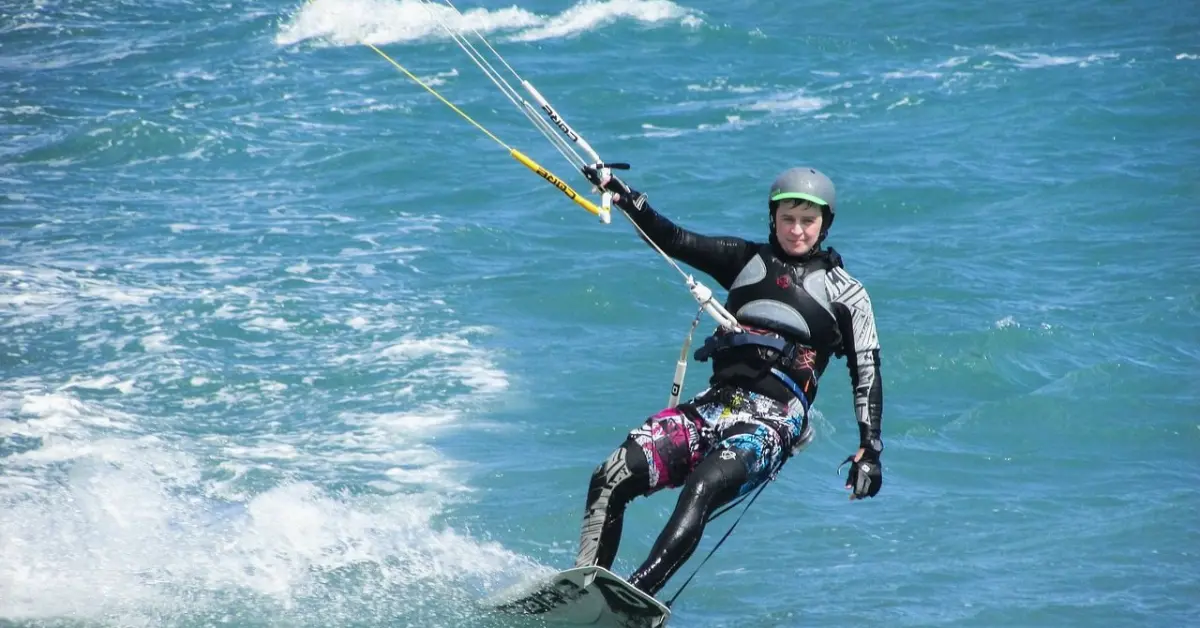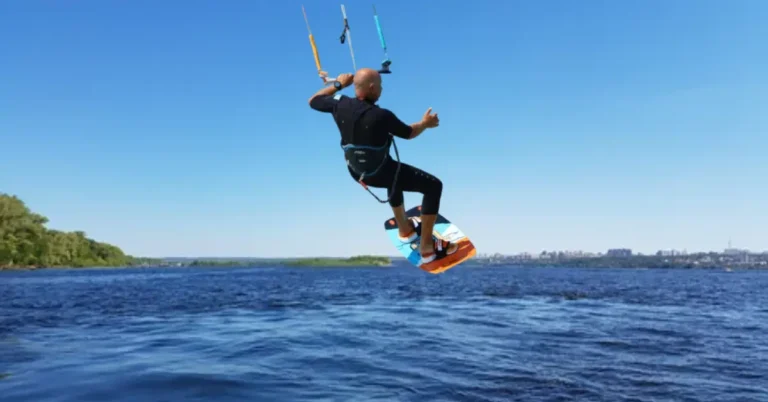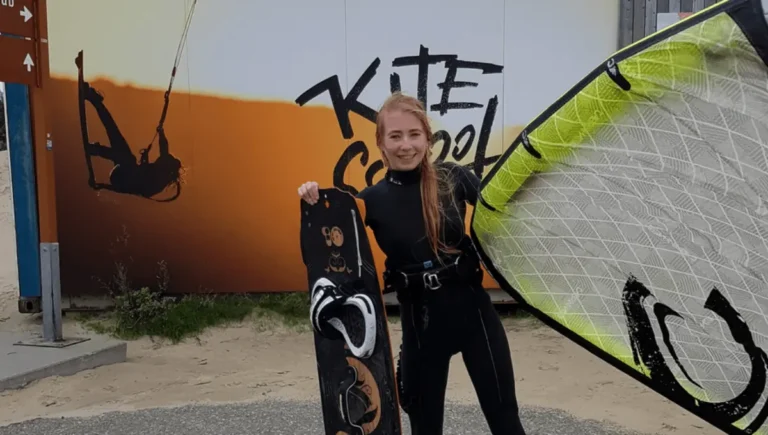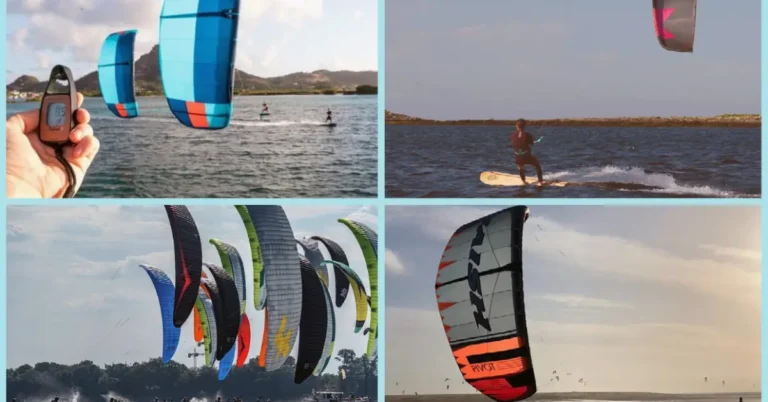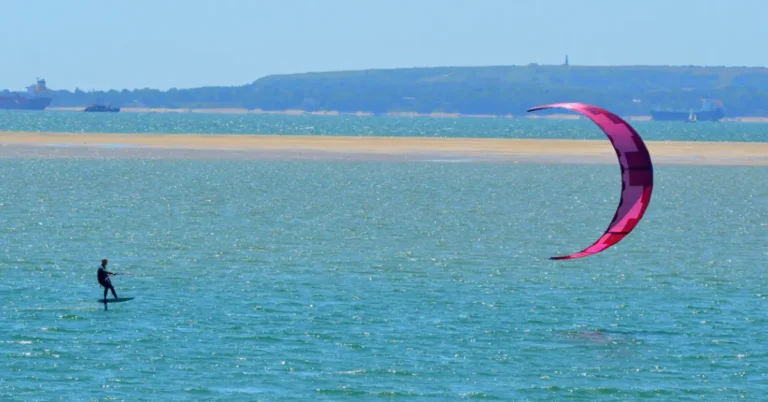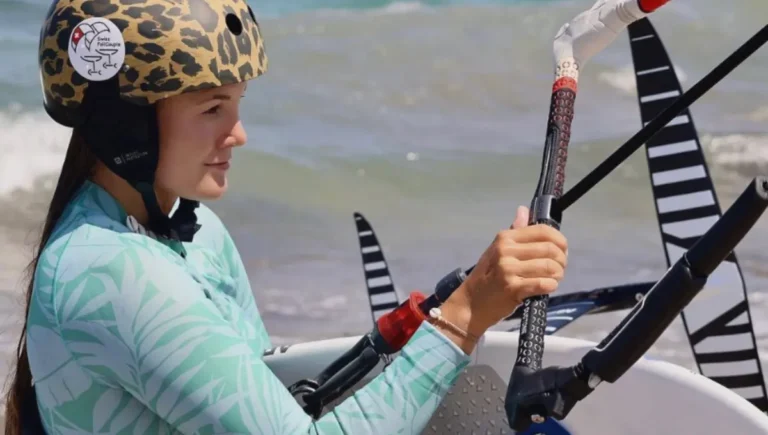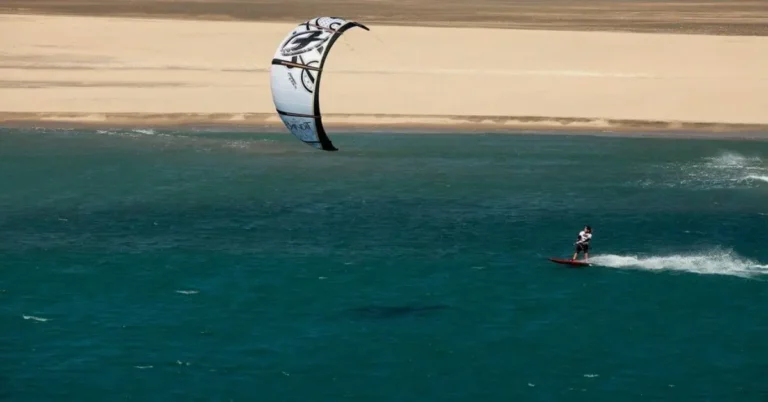Is Kitesurfing Difficult to Learn?
Learning to kitesurf isn’t a walk in the park. It’s a blend of two challenging disciplines: kite control and board riding, each demanding its own set of skills. Starting with separate practice for each is key. So, is kitesurfing difficult to master?
In reality, mastering kitesurfing demands patience, dedication, flexibility, time, endurance, and mental focus. However, take heart in knowing that even individuals as busy as Barack Obama, as restless as Richard Branson, and as unfit as Sergey Brin have succeeded in learning this sport.
With a mindful approach, diligent step-by-step progression, and confidence in each level before advancing, anyone can conquer kitesurfing.
Also Read: kitesurfing work
Who is your kiteboarding advisor?
The difficulty of kitesurfing is subjective, varying greatly depending on who you ask. Instructors often claim it’s easy, citing students who ride on their first day. Conversely, those who’ve tried and quit will offer a different, likely discouraging, perspective.
When choosing an instructor, remember that being a great rider doesn’t necessarily make one a great coach. Many Olympic champions are coached by individuals who haven’t won Olympic gold themselves.
Is it hard to understand the wind?
In the realm of kitesurfing, the wind reigns supreme. It’s robust, capricious, and commands respect. Understanding its nuances is crucial; the better you grasp its behavior and patterns, the more adept you’ll become at harnessing its force.
Before rushing into the water, it’s essential to spend time in the classroom—analyzing wind charts, studying its movements, and discerning preferred conditions for kitesurfing. Familiarize yourself with key terms like “Wind Window,” “Edge of the Wind Window,” “Power Zone,” “Onshore Wind,” “Offshore Wind,” “Wind Gradient,” and “Thermal Winds.” Additionally, comprehend the relationship between wind direction and your riding path.
Many novice kitesurfers seek the ideal wind conditions early in their journey. Consistent, steady winds moving in a single direction facilitate smoother rides. Thus, invest time in locating optimal wind conditions.
A valuable tip: Thermal air streams, known for their stability, typically peak around 2 PM. Consequently, many kitesurfers opt for a leisurely morning and arrive at the beach post-lunch to capitalize on these predictable winds.
Finding a good kitesurfing school/instructor can be challenging.
It’s essential to recognize that excelling in kitesurfing doesn’t automatically translate to being an excellent coach. Mastering the sport and teaching it effectively are two distinct skills. So, while a rider might impress with their maneuvers, they may not excel at imparting their knowledge.
Finding a skilled coach is invaluable. Many kiteboarding coaches, including myself, are not native English speakers. To gauge compatibility, spend time conversing with them on the beach. Assess whether you communicate well, share a rapport, and understand each other easily before booking a class. Look for instructors who are passionate about teaching and fostering their students’ progress.
If an instructor is unavailable for a direct conversation, seek feedback from their students immediately after a class. Inquire about their experiences and any areas of dissatisfaction. Additionally, observe the instructor’s interactions during sessions to gauge their enthusiasm and dedication to teaching.
Is it hard to master kite control skills?
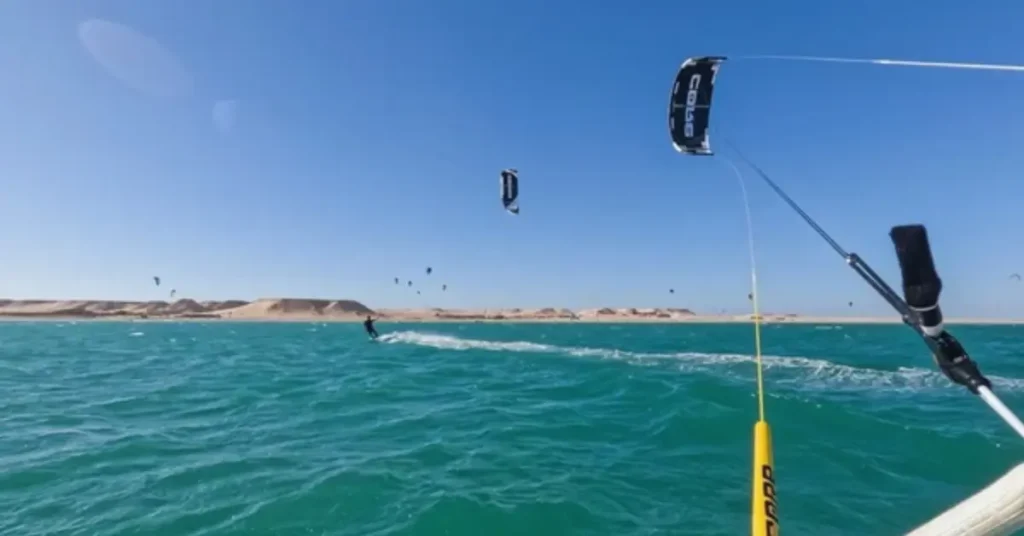
Start your kitesurfing journey with the safest option: a trainer kite. These kites are the smallest in the kitesurfing family, offering gentle pulls even if you make mistakes. Engaging the safety system is straightforward—simply release the control bar.
Dedicate several sessions to familiarize yourself with the trainer kite. Understanding its mechanics is just the beginning; the key is to develop muscle memory for steering the kite instinctively, without conscious thought or visual cues. Practice relentlessly; there’s no such thing as overdoing it. The more time you invest with the trainer kite, the smoother your transition to larger kites will be.
Flying a trainer kite involves two stages. Firstly, master keeping the kite at the wind window’s edge and maneuvering it between positions—typically from 10 o’clock to 1 o’clock. Secondly, progress to executing maneuvers such as circles, figure eights, and reverse movements. Challenge yourself to perform these maneuvers without constantly watching the kite.
Is it hard to switch to the real kitesurfing kite?
Once you’ve honed your skills with the trainer kite, transitioning to the larger kite should be relatively smooth. While the big kite may feature additional controls like de-power and center line trimming, these adjustments are manageable if you’ve mastered kite steering.
It’s crucial to undertake this step under the guidance of a seasoned kitesurfer to prevent any errors with the powerful kite.
Select a location wisely for your first experience with the big kite, opting for waist-deep water for safety. Falling into water provides a cushion, reducing the risk of injury. Ideally, your instructor should launch the big kite while both of you are in the water. This ensures a safer handover of control to you.
This phase will require multiple sessions. Initially, you’ll acclimate to the power generated by the big kite. You’ll also learn essential techniques such as launching and landing, self-launching and self-landing, water re-launching, body dragging, and self-rescue. These skills can be practiced without incorporating the board.
Is it difficult in kitesurfing to start riding?
Transitioning to riding the board in kitesurfing marks a significant milestone in your learning journey. It’s the point where theory meets practice, requiring full focus and dedication. Unlike the simplicity of managing just the kite, now you’re balancing two independent pieces of equipment connected only by your body.
Mastering board riding is a skill in itself. Twin-tip boards, commonly used in kitesurfing, offer minimal buoyancy, necessitating the initiation of planning to gain momentum and lift out of the water. There’s no room for sluggishness; you must build speed to progress. Undoubtedly, this phase poses the greatest challenge in kitesurfing.
Yet, amidst the difficulty lies unparalleled excitement. As you conquer this hurdle, all your prior preparation culminates in the exhilarating sensation of riding the waves. It’s a moment worth celebrating as you prepare to tackle the next challenge on your kitesurfing journey.
Is riding upwind easy or hard?
Riding upwind in kitesurfing may appear physically demanding, but it primarily revolves around balance. It introduces you to a unique equilibrium between gravity, the pull of the kite, and the propulsion from your board—an aspect often deemed the “holy grail” of kitesurfing.
Mastering the skill of riding upwind offers numerous benefits. It reduces the need for extensive walking, enables the use of smaller kites and less wind, and grants greater freedom in choosing your riding direction.
Is it difficult? Not necessarily. Students who invest time in visualizing this step often attempt riding upwind on their very first session. Starting with short bursts and gradually extending them, you’ll soon find yourself riding upwind effortlessly—it becomes second nature.
Is riding waves difficult for kitesurfers?
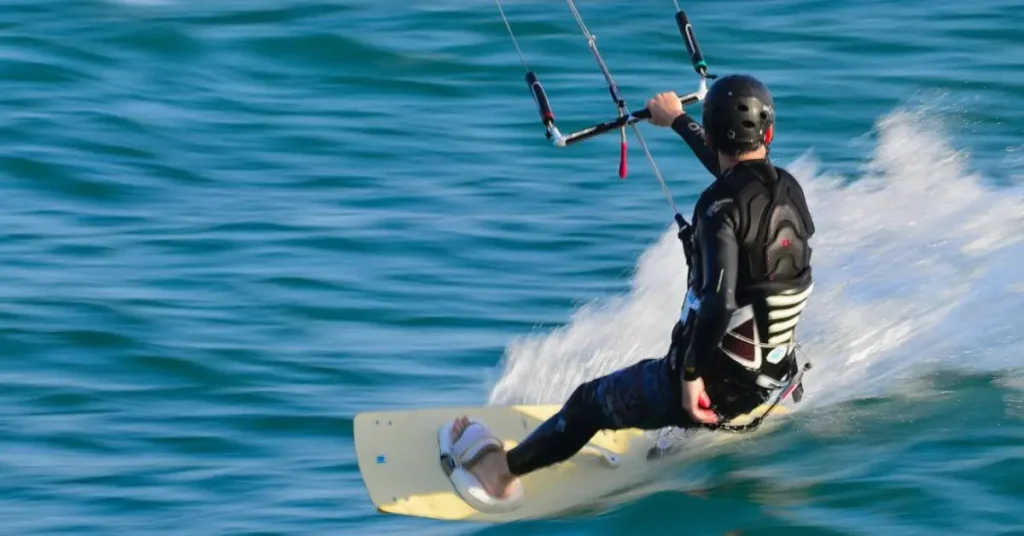
For new kitesurfers, waves might initially appear daunting, especially if you’ve been practicing on calm, flat water. Waves can seem like adversaries, sapping kinetic energy as you navigate their peaks and troughs. Climbing up a wave requires extra pull; descending can feel like losing ground downwind. However, this perception changes with experience.
As you gain proficiency, you’ll learn to navigate waves efficiently, finding the balance between preserving momentum and smoothly traversing them. Eventually, you’ll seek out larger, ocean-sized waves for the thrill they offer.
When riding waves, it’s essential to keep your kite slightly higher. Waves create lulls and turbulence in their troughs, increasing the risk of dropping your kite. Unlike on flat water, relaunching becomes more challenging in wave conditions. With practice and technique, riding waves becomes a thrilling aspect of kitesurfing rather than a daunting obstacle.
Is jumping difficult for kitesurfing?
Jumping in kitesurfing is often perceived as easy, with some riders unintentionally catching air. However, it’s the landing that requires careful attention and skill. Achieving a soft, safe, and controlled landing is crucial, demanding more focus than the takeoff itself.
A kitesurfing jump comprises three phases: takeoff, flight, and landing. Before attempting your first jump, it’s imperative to understand each phase thoroughly. Do not attempt jumps if you’re unsure how to land properly.
Additionally, jumping may feel easier in one direction than the other, as most kitesurfers have a preferred side. This preference categorizes riders as either “goofy foot” or “regular.” Understanding your preferred side can influence your jumping technique.
Tips to Facilitate the Learning Process of Kitesurfing
To facilitate the learning process of kitesurfing, focus on two key aspects. Firstly, prioritize enhancing your balance, as kitesurfing predominantly revolves around maintaining equilibrium between the kite, board, and gravity. Secondly, dedicate yourself to acquiring extensive knowledge about kitesurfing equipment—from setup and adjustments to control techniques.
Comprehensive understanding minimizes the need for trial and error, ensuring a smoother learning curve. Alongside this, carry a hefty dose of patience, prepared to persist through numerous attempts at mastering each step. The eventual reward? Utterly awesome!
Comparing the Difficulty of Learning Kitesurfing to Other Board Sports
Learning kitesurf can pose unique challenges compared to other board sports. While skills from sports like snowboarding and wakeboarding can be beneficial, there are also notable differences. For instance, windsurfing habits may interfere with kitesurfing due to the contrasting techniques for generating power.
Snowboarding experience aids in understanding board control and riding upwind while wakeboarding familiarity helps with board handling. However, the vertical pull in kitesurfing versus the horizontal pull in wakeboarding can require adjustments, making the learning curve steeper for seasoned wakeboarders.
Frequently Asked Questions
Conclusion
Kitesurfing presents challenges but is achievable with dedication and proper instruction. Learning depends on factors like individual progress and quality of training. Patience and practice are key. Reputable kitesurfing schools offer structured lessons, safety guidance, and equipment knowledge.
While it may take time to master, the rewards—thrilling experiences on the waves, exploration of coastal beauty, and a full-body workout—are worth it. With perseverance, anyone can embrace the excitement and freedom of kitesurfing.
